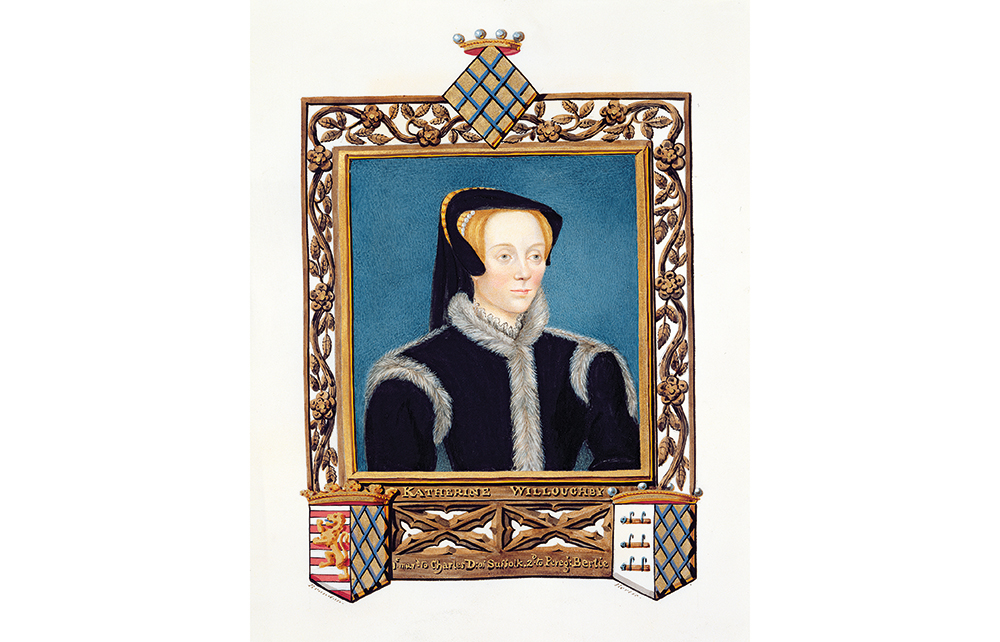At 7 o’clock on a bleak February morning in 1542, King Henry VIII’s fifth wife Katherine Howard, so enfeebled by fear and misery that she could hardly stand, was half-led, half-carried from her cell in the Tower of London to the scaffold in a nearby courtyard. Watching as the axe fell on her mistress’s neck, and knowing it would be her turn next, was her lady in waiting Jane Rochford.
This grisly scene illustrates the horror that underlay the glamour and magnetism of a court where ambition, intrigue, plot and counter-plot swirled in a giddying maelstrom and where balancing on the slippery tightrope of Henry’s moods was essential. Threaded through with the stories of individual maids of honour, this is Tudor history from the perspective of the women who formed the households of Henry’s consorts. Then, says Nicola Clark, women were regarded merely as pawns in a family’s upward rise via a good marriage, or as reproductive vessels to ensure that family’s survival. Yet their influence has been hugely underestimated.
These female attendants were far more than the decorative accessories demanded by protocol and status. The maid of honour – young and single – or the more senior, married lady in waiting could be a close friend of the queen, her confidante, chaperone, a spy from the enemy’s camp or conduit from and to the queen. Maids of honour were constantly on display, expected to wear the latest fashions (here Anne Boleyn, with the style and allure of her teenage upbringing in the sophisticated French court, stood out) and converse elegantly with foreign envoys. For pretty, ambitious girls like Anne Basset, the 15-year-old daughter of Lady Lisle, a place at court offered what was then the goal of every aristocratic family: the chance of a brilliant marriage.
The first step was to place a daughter with some noblewoman who served the queen closely, as otherwise the applicant could not enter the queen’s privy chamber to be seen and hopefully approved of. Even this required much negotiation and calling-in of favours or family links, as the number of attendants a noblewoman might have was fixed according to her rank. Although up to 25 women served the queen closely, there were only six maids of honour at any given time, so competition was intense. Unless one could find out in advance who was leaving (usually to marry) and speak to the right people, the vacancy would have come and gone, as Lady Lisle’s many letters demonstrate.
The queen’s household was also a fruitful hunting-ground for Henry himself, either for a mistress or wife – four of his queens had been maids of honour – or to help get rid of an unwanted queen. For though men held all the power, it was often the evidence of women that counted. It was the ladies in waiting who had served Katherine of Aragon who were called to give evidence when Henry wanted his marriage to her made void so that he could marry Anne Boleyn.
Jane Rochford helped do for Anne herself when, testifying against her own husband George, the queen’s brother, she recorded how ‘George and the Queen had laughed together’ about the King’s poor sexual prowess, and that Anne had told her that the King ‘was not skilful in copulating with a woman and had neither virtue nor potency’.
The King’s third wife, whom he had been openly courting while still married to Anne, was Anne’s second cousin and one of her maids of honour, Jane Seymour (it was this new queen’s household that Anne Basset eventually entered as a maid). As for Anne of Cleves, chosen for reasons of state policy and religion, and referred to by Henry as ‘the Flanders mare’, here too the women of her household helped to end the marriage. When ‘they wished Her Grace with child’, she replied that she knew she was not pregnant as the King merely kissed her good night and good morning. Wisely, Anne signed the document of annulment. It was a time of terrifying uncertainty – Thomas Cromwell, hitherto the King’s right-hand man, had been arrested and imprisoned in the Tower, from where few emerged. As Anne told an ambassador: ‘Everybody is now fearing for their heads.’ Any slip could be fatal. After Mary, the King’s daughter by the cast-aside Katherine of Aragon, was declared illegitimate and therefore no longer a princess, a lady in waiting who thoughtlessly talked of her as Princess Mary was sent to the Tower.
Almost as soon as he had married Anne, the King started paying attention to one of her maids, Katherine Howard, whom he then wed a mere 19 days after the Cleves marriage was over. The 17-year-old, a pawn like all Tudor women, had no chance of refusing this fat, 49-year-old absolute monarch, who stank of the pus oozing from his ulcerated leg. Small wonder, really, that she began a love affair with the handsome, young Thomas Culpeper, arranging assignations with him through her favourite lady in waiting, Lady Rochford. The fallout was terrible: Katherine, Jane, Culpeper and others lost their heads, and the Tower became so full of those arrested that even its royal apartments had to be used as cells.
Kathryn Parr, the fourth maid of honour queen, who had come up to London to nurse her sick husband through his final illness, joined Princess Mary’s household after his death, where she was spotted by the King. As for Anne Bassett, after serving as maid to the new Queen Kathryn, after the King’s death in 1547, she was granted an annual pension of £26 and entered the service of Queen Mary, where she finally achieved her goal of a good marriage. As Clark writes: ‘Surviving the waiting game took courage, audacity and a degree of luck.’ I found it all fascinating.







Comments